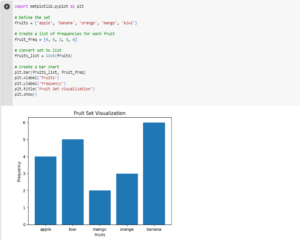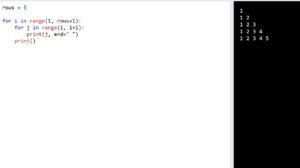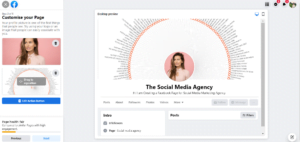Do you feel like your business is lost in the sea of Social Media? Are you not getting the engagement you want? If so, then you need to use hashtags! Hashtags are like keywords that help people find your content on Social media. When you use the right hashtags, your posts will show up in search results, and you’ll be able to reach a wider audience.
Hashtags can be a powerful tool for growing your business on Instagram. But they can also be confusing and overwhelming. That’s why we’re here to help! In this blog post, we’ll teach you everything you need to know about hashtags, including how to find the right ones, how to use them effectively, and how to track your results.
How Hashtags Work
Hashtags are simply words or phrases preceded by the iconic # symbol. When you include a hashtag in your post, it becomes a clickable link that leads to a collection of all the other posts that also feature that same hashtag. It’s like a digital gathering place where conversations and interactions come to life.
when you use a hashtag in your post, you simply add the # symbol followed by a word or phrase without any spaces. For example, if you’re posting about your Digital marketing, you can include the hashtag #Digitalmarketing in your post. This tells the platform that you want your post to be associated with that particular hashtag.
When someone searches for a specific hashtag, like #Digitalmarketing, the platform gathers all the posts that have used that same hashtag and displays them in the search results. This way, people who are interested in Digital Marketing can easily find your post along with others who share the same interest.
Hashtags are widely used on platforms like Twitter, Instagram, Facebook, and even some other platforms. They help to connect people who have common interests, spark conversations, and make it easier for users to discover new content related to their passions.
How to Choose the Right Hashtags
Choosing the right hashtags can significantly impact the visibility and reach of your posts. Here are some steps to help you select the most effective hashtags for your business:
1. Understand your audience
Start by identifying your target audience. Who are they? What are their interests? What hashtags might they be using? Understanding your audience will help you choose hashtags that resonate with them.
2. Research relevant keywords
Think about the keywords and phrases that are related to your business, products, or services. Consider industry-specific terms or popular topics in your niche. These keywords will form the basis for your hashtag research.
3. Explore social media platforms
Each social media platform has its own hashtag culture. Look at how hashtags are used on platforms like Twitter, Instagram, or LinkedIn within your industry. Pay attention to trending hashtags and popular discussions relevant to your business.
4. Utilize hashtag research tools
There are various tools available that can assist you in finding relevant hashtags. Some popular ones include Hashtagify, RiteTag, and Sprout Social’s hashtag analytics. These tools provide insights into the popularity, reach, and related hashtags for specific keywords.
5. Check out your competition
Take a look at what hashtags your competitors are using. This can give you an idea of what works well within your industry and help you identify potential hashtags for your own content.
6. Opt for a mix of popular and niche hashtags
It’s a good idea to include a mix of popular and niche hashtags in your posts. Popular hashtags can help you reach a broader audience, but they also face a lot of competition. Niche hashtags, on the other hand, may have a smaller audience but can be more targeted and engaged.
7. Be specific and focused
Choose hashtags that accurately represent the content of your post. Generic hashtags like #love or #happy may have a high volume of posts but may not attract the right audience. Instead, opt for specific hashtags that relate directly to your post’s topic or theme.
8. Keep an eye on trending topics
Stay updated with current events, holidays, or trending topics that are relevant to your business. Using trending hashtags can help you tap into conversations and increase your visibility.
How Many Hashtags to Use
When it comes to the number of hashtags to use, it’s best to find a balance. If you’re new to using hashtags, start with a few per post. As you gain more experience and build your following, you can gradually increase the number.
Using a few relevant hashtags helps categorize your content and make it more discoverable. It increases the chances of your post being seen by people who are interested in similar topics. It’s like adding labels to your post, making it easier for others to find.
However, you should avoid going overboard with hashtags. Using too many hashtags can make your post look spammy or cluttered, and it may not be well-received by your audience. It’s better to focus on using a handful of hashtags that are highly relevant to your post and your target audience.
Where to Put Hashtags on Instagram
- Post captions: The most common and effective place to add hashtags is within your post captions. You can incorporate hashtags directly into your caption text, either at the end or within the sentence. For example, “Enjoying a sunny day at the beach! #summervibes #beachlife”.
- Instagram Stories: You can also add hashtags to your Instagram Stories. Simply use the text tool to type out your desired hashtags or use the hashtag sticker feature. Hashtags in Stories can increase your visibility and attract viewers who are searching or following those hashtags.
- Instagram bio: While hashtags in your bio won’t be clickable, they can still be useful for categorizing or highlighting specific aspects of your profile. You can include relevant hashtags that represent your brand or niche. For example, if you’re a food blogger, you can mention #foodie or #recipe enthusiast in your bio.
Creating Your Own Branded Hashtags
Creating and using branded hashtags can be really helpful for your brand. They can make your brand more recognizable and help people remember it. Branded hashtags also create a sense of community among your followers, so they feel connected to your brand. When people use your hashtag, it shows that they like your brand and they become your brand’s supporters. This can lead to more people discovering your brand and getting involved with it.
To design a unique and memorable branded hashtag, keep it simple and easy to remember. Make sure it relates to your brand and what you do. You don’t want it to be too long or confusing. Also, promote your hashtag on your social media, website, and other marketing materials. Encourage people to use it and engage with the posts that use it. This will make your hashtag more popular and help your brand grow.
How to Track Your Hashtag Success
Tracking the success of your hashtag strategy is important to understand the impact of your efforts. Here are a couple of ways you can track the success of your hashtags:
- Instagram Insights: If you’re using Instagram, you can access Instagram Insights, which provides valuable analytics about your posts. Within Insights, you can find information about how many people have seen your posts through hashtags, how many clicks your hashtags received, and how many new followers you’ve gained from hashtag usage. This data gives you an overview of the reach and engagement generated by your hashtags.
- Hashtag analytics tools: Dedicated hashtag analytics tools can provide deeper insights into your hashtag performance. These tools track metrics like the number of times your hashtags have been used, the number of times your posts have been shared using your hashtags, and the number of people who have seen your posts through your hashtags. Examples of such tools include Hashtagify, Sprout Social, and Hootsuite. They can help you analyze the effectiveness of your hashtags and make informed decisions based on the data.
Mistakes to Avoid with Hashtags
- Using irrelevant or overused hashtags: Avoid using hashtags that have no connection to your content or using excessively popular hashtags that may bury your post in a sea of other posts. Focus on hashtags that are truly relevant to your content and have a reasonable level of activity.
- Overloading with hashtags: While it’s important to include hashtags, don’t go overboard. Using too many hashtags can make your post look spammy and reduce its overall impact. Stick to a reasonable number of hashtags that enhance your post without overwhelming it.
- Neglecting hashtag research: Take the time to research and understand the hashtags you plan to use. Ensure they are appropriate, actively used, and aligned with your brand. Avoid using hashtags without understanding their meaning or potential associations.
Conclusion
Boost your business on social media with hashtags! Reach more people by using the right hashtags that match your content. Avoid mistakes like using unrelated or overused hashtags. Stay updated with trends and track your success using Instagram Insights or hashtag analytics tools. Hashtags help your brand stand out, create a community, and engage your audience. Don’t miss out on this powerful marketing tool!
Image Ref istockphoto by Deepak Sethi







